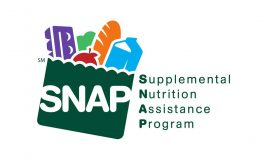by Peter Larkin/ president and CEO, National Grocers Association
Special to The Shelby Report
In April, NGA—alongside the Food Marketing Institute (FMI)—welcomed supermarket retailers, wholesalers and food industry state association executives from across the nation to Washington, D.C., for the annual “Day in Washington” supermarket industry fly-in. The timing of the fly-in could not have been more relevant as the national debate on the Supplemental Nutrition Assistance Program (SNAP) continues to unfold and Congress turned its focus to reauthorizing the Farm Bill.
SNAP is a fundamental safety net program for millions of Americans and has largely been a success due to the private-public partnership it shares with supermarket operators. In recent years, policymakers have targeted SNAP to improve diets and combat obesity among low-income people. While these politicians are well-intentioned, their proposals impose costs on supermarkets and consumers while overlooking simpler solutions that encourage healthy behaviors.
Currently, no clear standard exists for defining foods as good or bad, healthy or not healthy. There are more than 650,000 food and beverage products on the market today, and approximately 20,000 are introduced each year. These numbers cover just those items with UPC codes, not items within the deli and bakery that are often made in store or sourced from local producers. Managing a SNAP-eligible foods list presents operational challenges and complexities. It would require identifying, evaluating and tracking the nutritional profile of the hundreds of thousands of food products available for sale—a sizable and costly task, particularly for small businesses like independent grocery stores.
 Additionally, restricting SNAP choice would not only impose another layer of red tape on Main Street grocers but also single out low-income recipients, all while doing little to change behaviors. USDA research has shown that SNAP and non-SNAP diets are “nearly identical,” and that about 70 percent of SNAP participants purchase a portion of food with their own money and would likely substitute one form of payment for another if facing restrictions.
Additionally, restricting SNAP choice would not only impose another layer of red tape on Main Street grocers but also single out low-income recipients, all while doing little to change behaviors. USDA research has shown that SNAP and non-SNAP diets are “nearly identical,” and that about 70 percent of SNAP participants purchase a portion of food with their own money and would likely substitute one form of payment for another if facing restrictions.
Instead of stigmatizing SNAP recipients, grocery retailers are working with their customers and communities to incentivize healthier eating through programs such as Double Up Food Bucks. Cost can be a major barrier to purchasing fresh produce, but SNAP customers participating in the Double Up Food Bucks program are able to stretch their benefits further while purchasing fresh local produce and supporting local farmers.
Additionally, many independent supermarkets are doing their part to ensure the health of communities by providing in-store nutritionists or dietitians and nutritional signage to help consumers make healthier food choices. According to research done for NGA on behalf of Nielsen and conducted by The Harris Poll, the majority of consumers who shop independent grocery stores are looking for their local store to support them with a healthier lifestyle, and noted that offering instructions on how to cook with certain foods (28 percent); help with label reading including ingredients and nutritional claims (25 percent); and general guidance on food that gives good nutritional value for the dollar (23 percent) were the top ways a store could provide support.
America’s independent supermarket operators have been long partners with federal and state government entities in the SNAP food delivery system. Since the program’s inception, grocers have worked collaboratively with USDA, Congress and industry partners to improve efficiency and effectiveness in the program. Good nutrition is important for everyone, but designating the government to prescribe Americans’ food choices means bureaucrats picking winners and losers on grocery shelves and in grocery carts with very little impact on our waistlines or health.
Keep reading:
https://www.theshelbyreport.com/2018/04/20/nga-applauds-farm-bill-advancement/
https://www.theshelbyreport.com/2018/04/13/industry-responds-house-farm-bill/

